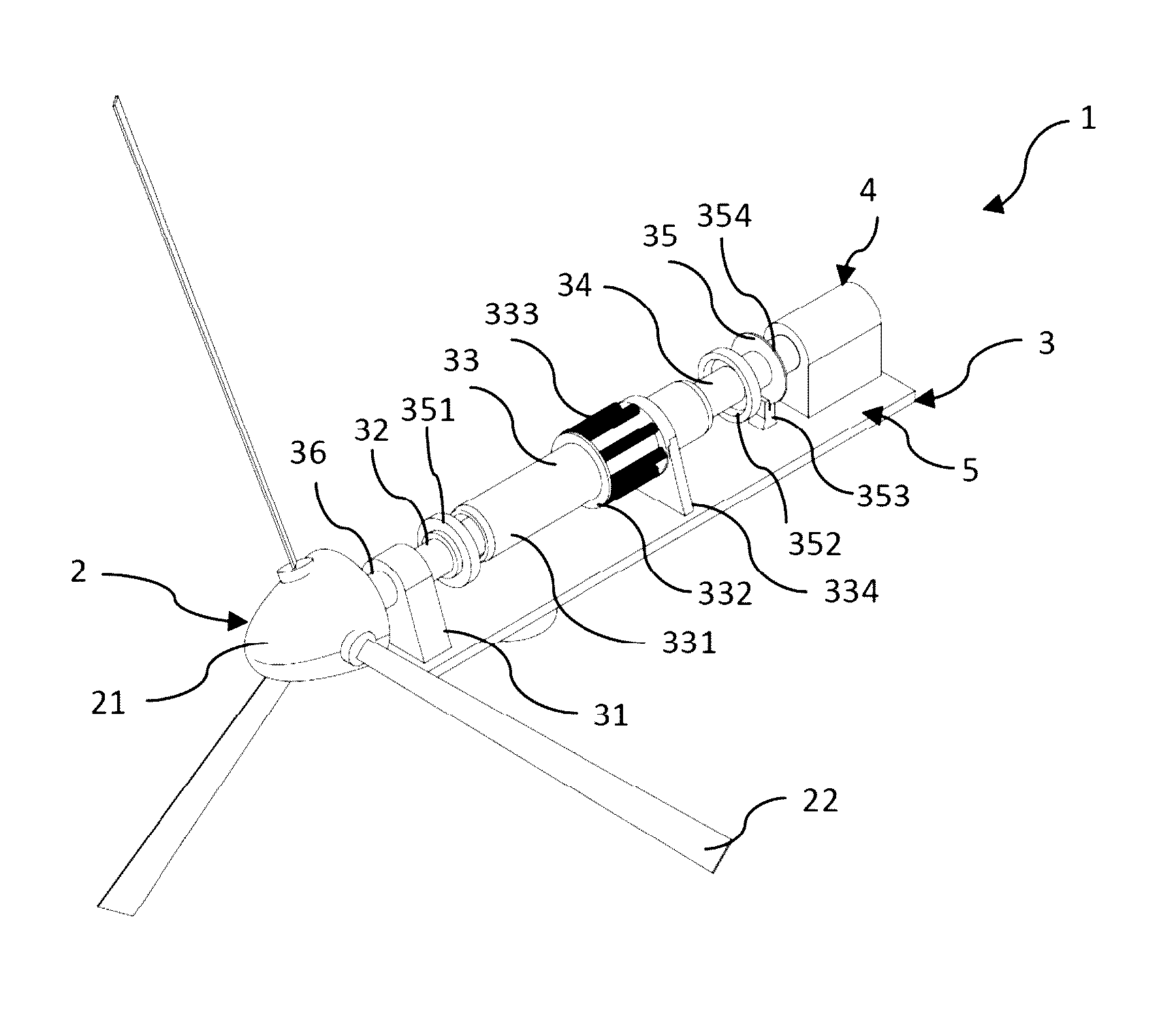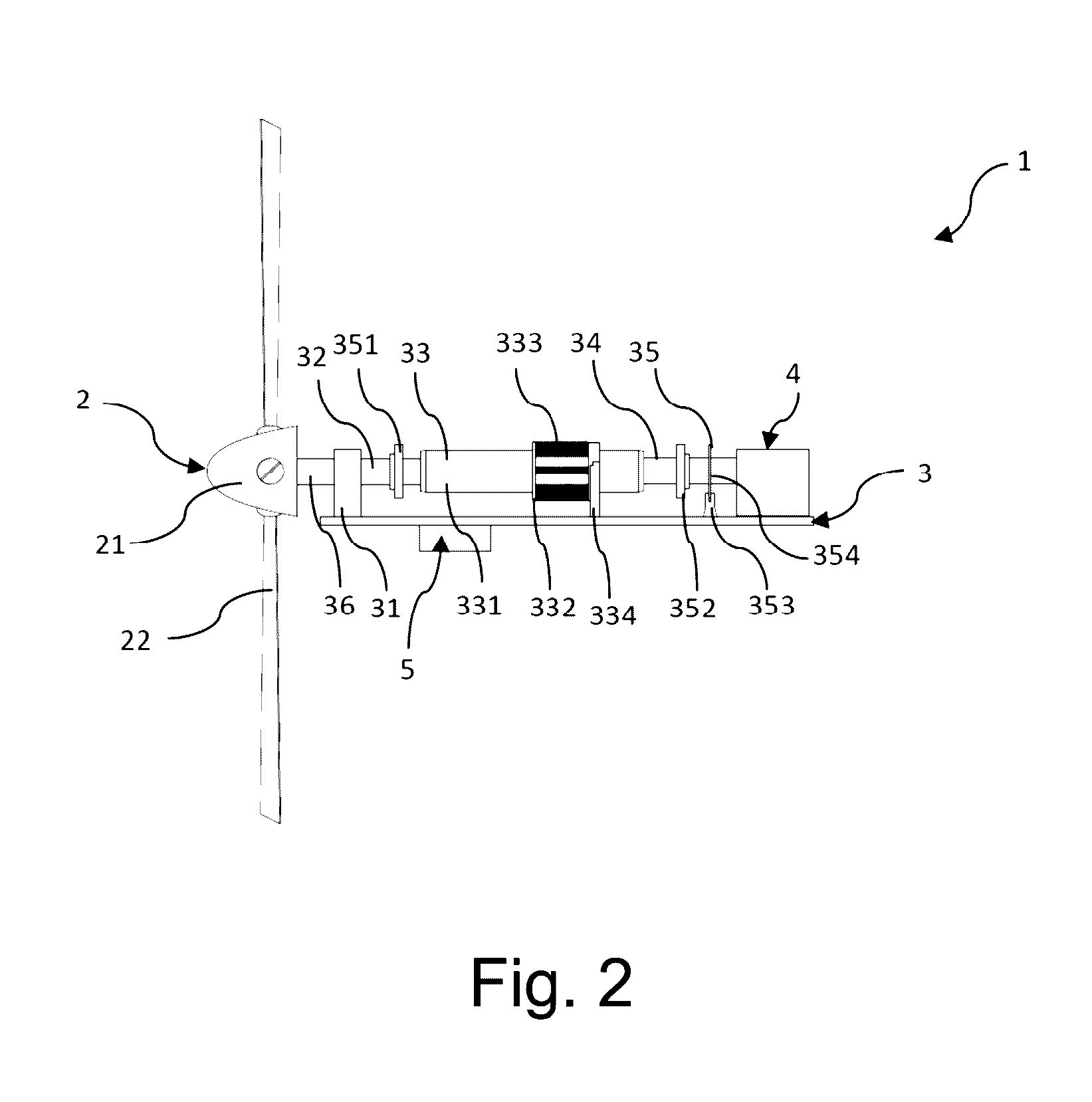Device for controlling torque output of wind turbine blades
a technology of torque output and wind turbine blade, which is applied in the direction of wind energy generation, mechanical equipment, machines/engines, etc., can solve the problems of shortening the service life of the associate components consuming energy, and affecting so as to maintain the output stability of the wind turbine, energy consumption, and composition complexity
- Summary
- Abstract
- Description
- Claims
- Application Information
AI Technical Summary
Benefits of technology
Problems solved by technology
Method used
Image
Examples
Embodiment Construction
[0024]Referring to FIG. 1 to FIG. 5, where FIG. 1 is a schematic isometric view of the wind turbine according to the present invention, FIG. 2 is a schematic side view of the wind turbine according to the present invention, FIG. 3 is a schematic side view of the present invention, FIG. 4 is a schematic partial side view of the present invention, and FIG. 5 is a schematic cross sectional view of a transmission sliding bush according to the present invention.
[0025]As shown, the present invention is a fully passive device for fixing the torque output of the blades of a wind turbine 1. The wind turbine 1 comprises a blade assembly 2, the present invention 3, a generator 4, and a framework 5. The blade assembly 2 comprises a pitch angle adjustment device 21 and blades 22. As such, the present invention 3 can effectively maintain a constant torque generated by the blades 22 to the generator 3 without requiring any external power input and measurement signal generated from other devices. T...
PUM
 Login to View More
Login to View More Abstract
Description
Claims
Application Information
 Login to View More
Login to View More - R&D
- Intellectual Property
- Life Sciences
- Materials
- Tech Scout
- Unparalleled Data Quality
- Higher Quality Content
- 60% Fewer Hallucinations
Browse by: Latest US Patents, China's latest patents, Technical Efficacy Thesaurus, Application Domain, Technology Topic, Popular Technical Reports.
© 2025 PatSnap. All rights reserved.Legal|Privacy policy|Modern Slavery Act Transparency Statement|Sitemap|About US| Contact US: help@patsnap.com



